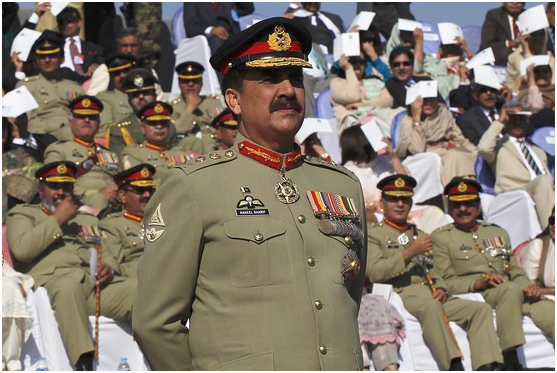Refusing To Fight In Yemen, Pakistan Rediscovers Its Centre Of Gravity
No Pakistan troops in Yemen

General Zia ul Haq must have turned in his grave. Pakistan’s refusal to participate in the war in Yemen in response to a Saudi request is an event of far reaching consequences. This is the first real signal that Arabization of the South Asian country, Zia’s project, never really took roots.
This is why a request from King Salman bin Abdulaziz Al Saud, that Pakistan send ground troops and attack aircraft in support for the Kingdom’s war with its southern neighbour, was unanimously rejected by Pakistan’s National Assembly.
Clearly, Pakistan’s participation in the war on the side of Saudi Arabia against Houthis, a Shiite group, would have sharpened Sunni-Shia tensions. After all, 20 percent of Pakistan’s population is Shia.
That the Saudis and their GCC cohorts have been shouting from every minaret that they face an existential danger with Iran’s growing influence makes it that much more problematic for any country to side with King Salman in this expedition. Why should a country which has a sensitive border with Iran pick a quarrel with it? That too at a time when the P5+1 have just unlocked the nuclear door through which Iran will walk out to join the international community as a regional power.
This precisely is what the House of Saud are in convulsions about. The rise of Iran is disturbing for Israel too as is clear from fits Benjamin Netanyahu has been throwing.
There are multiple reasons why Pakistan’s help was sought. An air campaign against Houthis was simply not working without ground support. Pakistani soldiers in support would have given heart to a demoralized Saudi coalition.
What would have mattered most to the Saudis was for Islamabad to line up with them, not for purposes of war alone but for the new balance of power Americans are trying to create in the region.
In the balance which lasted so far, Riyadh, Jerusalem, Cairo, Ankara were all power centres holding onto the US apron strings. These strings may not be around for long for Gulf Arabs and Israel to clutch. The sole super power is inclined to shed its day to day west Asian responsibilities to be able to attend to its bigger challenge in the Pacific. For the first time regional powers dependent on US support are having to contemplate life without it.
The US is not cutting loose quite as yet but is certainly packing up its bags. While it prepares itself for tasks ahead, it is helping clients like Saudi Arabia to mop their brow and be steady on their feet to be able to cope with an invigorated Iran about to enter the ring.
The US held back its air power in Tikrit until Iran led militia had abandoned the encirclement of the ISIS. It was sending a message to its regional clients. Yes, a nuclear deal was about to be signed with Iran. But balance of power would not be allowed to swing in Iran’s favour.
By helping Saudis with intelligence and mid air refueling, the US is reassuring Riyadh and other allies that it was helping thwart Houthi interests. Since the Houthis were Shias, Iranian influence was automatically checked.
This facile appraisal of a complex social and religious reality which the media is blaring out is dangerous for the Saudis who may already be finding themselves in a fix.
The impression being created is this: once the Shia Houthis are pummeled adequately, the 25 million Yemenis will fly kisses to the aircraft pounding their country.
When the Caliphate ended in Turkey in 1924, a system of Imams still operated in Yemen until 1962. When Nasser’s Arab socialism swept Aden, the Imam scooted, making peace with the Saudis, even giving them control of towns of Najran and Jizan on the Red Sea.
The earliest clashes the Saudis had with the Houthis in Saada province, abutting the border near Jizan, was on Eid e Ghadir. The Shias believed on this day the Prophet declared Ali his successor.
Mention this to the Saudis and they see red. But the rest of the population, many of whom trace their lineage to a branch of the fourth Imam and are called Zaidis are either positive or indifferent. I have seen them say their prayers in the famous mosque built by Ali in the old city of Sanaa. What does one make of it?
The Shia-Sunni label is highly misleading. The Shafi school of Islam which governs the population of Yemen is only technically Sunni. In its belief systems, it is more proximate to the partsans of Ali.
Shia-Sunni, therefore, is a false divide. The basic divide in the Muslim world is between those opposed to Ali and those who are not. In this framework, the Saudis and Yemenis are on opposite sides; Yemenis and Iranians are not.
The request by Saudi Arabia that Pakistan fight for them in Yemen was actually an invitation into blind, cavernous sectarianism.
By its historic vote, the National Assembly has located the nation’s centre of gravity in the sensible middle ground. With this vote the image of militancy, extremism, intolerance does not fade away but it certainly recedes into the margins. There is deep symbolism in another announcement made by Islamabad. From May 1, all mosques will call the Azaan (call to prayer) at the same time, irrespective of sects.



